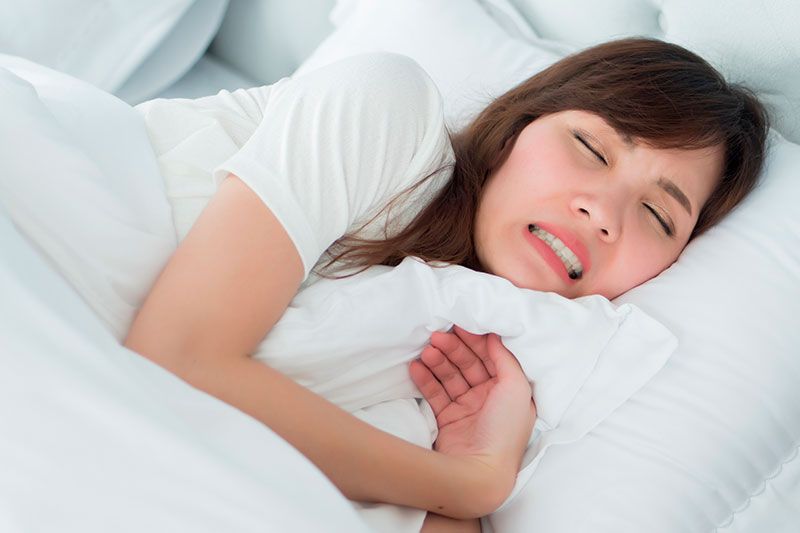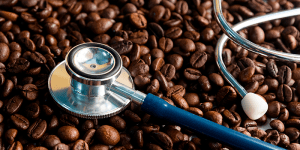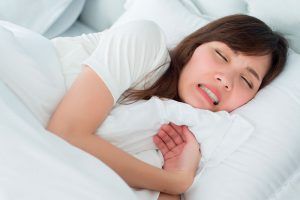Sustancias psicoactivas legales como factores de riesgo para el bruxismo relacionado con el sueño
28-04-2017
El objetivo de este estudio es investigar los posibles efectos del alcohol y el café en el bruxismo, para lo cual los investigadores utilizaron la información de más de 12.000 individuos sobre el consumo de estas sustancias y la enfermedad. El OR para la ingesta de más de 8 tazas de café al día fue de 1,4 con un intervalo de confianza del 95 % (1,01 – 1,98). Los investigadores concluyeron que hay una asociación independiente entre el consumo de café y el bruxismo.
Ahlberg J, Savolainen A, Rantala M et al. (2004) Reported bruxism and biopsychosocial symptoms: a longitudinal study. Community Dent Oral Epidemiol 32:307–11. Ahlberg K, Ahlberg J, Könönen M et al. (2005) Reported bruxism and restless legs syndrome in media personnel with or without irregular shift work. Acta Odontol Scand 63:94–8. American Academy of Sleep Medicine (AASM). (ed) (2005) The International Classification of Sleep Disorders, 2nd edn. Westchester, IL: American Academy of Sleep Medicine. Bastien R, Gale EN, Mohl ND. (1990) An exploratory study on increases in masseteric muscle activity induced by caffeine. J Can Dent Assoc 56:943–7. Bellini M, Marini I, Checchi V et al. (2011) Self-assessed bruxism and phobic symptomatology. Minerva Stomatol 60:93–103. Broms U, Silventoinen K, Lahelma E et al. (2004) Smoking cessation by socioeconomic status and marital status: the contribution of smoking behavior and family background. Nicotine Tob Res 6:447–55. Chen WH, Lu YC, Lui CC et al. (2005) A proposed mechanism for diurnal/nocturnal bruxism: hypersensitivity of presynaptic dopamine receptors in the frontal lobe. J Clin Neurosci 12:161–3. De Laat A, Macaluso GM. (2002) Sleep bruxism as a motor disorder. Mov Disord 17:S67–9. De Leeuw R. (ed.) (2008) Orofacial Pain: Guidelines for Assessment, Diagnosis, and Management, 4th edn. Chicago: Quintessence. De Leon J, Rendon DM, Baca-Garcia E et al. (2007) Association between smoking and alcohol use in the general population: stable and unstable odds ratios across two years in two different countries. Alcohol Alcohol 42:252–7. Grucza RA, Bierut LJ. (2006) Co-occurring risk factors for alcohol dependence and habitual smoking: update on findings from the Collaborative Study on the Genetics of Alcoholism. Alcohol Res Health 29:172–8. Psychoactive substances as risk factors for bruxism 493 Downloaded from http://alcalc.oxfordjournals.org/ at Universidad de los Andes on September 4, 2013 Hartmann E. (1979) Alcohol and Bruxism. N Engl J Med 301:333–4. Hartmann E, Mehta N, Forgione A et al. (1987) Bruxism: effects of alcohol. Sleep Research 16:351. Henningfield JE, Clayton R, Pollin W. (1990) Involvement of tobacco in alcoholism and illicit drug use. Br J Addict 85:279–92. Henningfield JE, London ED, Pogun S (eds). (2009) Nicotine Psychopharmacology. Heidelberg, Berlin: Springer. Hosmer DW, Lemeshow S. (2000) Applied Logistic Regression, 2nd edn. New York: Wiley. Hublin C, Kaprio J. (2003) Genetic aspects and genetic epidemiology of parasomnias. Sleep Med Rev 7:413–21. Hublin C, Kaprio J, Partinen M et al. (1994) The prevalence of narcolepsy: an epidemiological study of the Finnish Twin Cohort. Ann Neurol 35:709–16. Hublin C, Kaprio J, Partinen M et al. (1997) Prevalence and genetics of sleepwalking – a population-based twin study. Neurology 48:177–81. Istvan J, Matarazzo JD. (1984) Tobacco, alcohol, and caffeine use: a review of their interrelationships. Psychol Bull 95:301–26. Järvenpää T, Rinne JO, Koskenvuo M et al. (2005) Binge drinking in midlife and dementia risk. Epidemiology 16:766–71. Johansson A, Unell L, Carlsson GE et al. (2004) Associations between social and general health factors and symptoms related to temporomandibular disorders and bruxism in a population of 50-year-old subjects. Acta Odontol Scand 62:231–7. Kaprio J, Koskenvuo M. (1988) A prospective study of psychological and socioeconomic characteristics, health behavior and morbidity in cigarette smokers prior to quitting compared to persistent smokers and non-smokers. J Clin Epidemiol 41:139–50. Kaprio J, Koskenvuo M, Langinvainio H et al. (1987) Genetic influences on use and abuse of alcohol: a study of 5638 adult Finnish twin brothers. Alcohol Clin Exp Res 11:349–56. Laitala VS, Kaprio J, Silventoinen K. (2008) Genetics of coffee consumption and its stability. Addiction 103:2054–61. Lavigne GJ, Manzini C. (2000) Bruxism. In Kryger MH, Roth T, Dement WC (eds). Principles and Practice of Sleep Medicine, 3rd edn. Philadelphia, PA: WB Saunders, 773–85. Lavigne GJ, Montplaisir J. (1994) Restless legs syndrome and sleep bruxism: prevalence and association among Canadians. Sleep 17:739–43. Lavigne GJ, Rompre PH, Montplaisir JY. (1996) Sleep bruxism: validity of clinical research diagnostic criteria in a controlled polysomnographic study. J Dent Res 75:546–52. Lavigne GJ, Lobbezoo F, Rompre P et al. (1997) Cigarette smoking as a risk factor or an exacerbating factor for restless legs syndrome and sleep bruxism. Sleep 20:290–3. Lavigne GJ, Soucy J, Lobbezoo F et al. (2001) Double-blind, crossover, placebo-controlled trial of bromocriptine in patients with sleep bruxism. Clin Neuropharmacol 24:145–9. Lavigne GJ, Kato T, Kolta A et al. (2003) Neurobiological mechanisms involved in sleep bruxism. Crit Rev Oral Biol Med 14:30–46. Lavigne GJ, Khoury S, Abe S et al. (2008) Bruxism physiology and pathology: an overview for clinicians. J Oral Rehabil 35:476–94. Leeman RF, Heilig M, Cunningham CL et al. (2010) Ethanol consumption: how should we measure it? Achieving consilience between human and animal phenotypes. Addict Biol 15:109–24. Lobbezoo F, Naeije M. (2001) Bruxism is mainly regulated centrally, not peripherally. J Oral Rehabil 28:1085–91. Lobbezoo F, Lavigne GJ, Tanguay R et al. (1997a) The effect of the catecholamine precursor L-Dopa on sleep bruxism: a controlled clinical trial. Mov Disord 12:73–8. Lobbezoo F, Soucy JP, Hartman NG et al. (1997b) Effects of the D2 receptor agonist bromocriptine on sleep bruxism: report of two single-patient clinical trials. J Dent Res 76:1610–4. Lobbezoo F, Van Der Zaag J, Naeije M. (2006) Bruxism: its multiple causes and its effects on dental implants – an updated review. J Oral Rehabil 33:293–300. Macaluso GM, Guerra P, Di Giovanni G et al. (1998) Sleep bruxism is a disorder related to periodic arousals during sleep. J Dent Res 77:565–73. Madden PAF, Heath AC. (2002) Shared genetic vulnerability in alcohol and cigarette use and dependence. Alcohol Clin Exp Res 26:1919–21. Manfredini D, Lobbezoo F. (2009) Role of psychosocial factors in the etiology of bruxism. J Orofac Pain 23:153–66. Manfredini D, Lobbezoo F. (2010) Relationship between bruxism and temporomandibular disorders: a systematic review of literature from 1998 to 2008. Oral Surg Oral Med Oral Pathol Oral Radiol Endod 109:e26–50. Molina OF, Santos J, Mazzetto M et al. (2001) Oral jaw behaviors in TMD and bruxism: a comparison study by severity of bruxism. Cranio 19:114–22. National Institute on Alcohol Abuse and Alcoholism (NIAAA). (2005) Helping Patients Who Drink Too Much: A Clinician’s Guide. NIH Publication, no. 05–3769. http://pubs.niaaa.nih.gov/ publications/AA66/AA66.pdf (20 November 2011, date last accessed). Official Statistics of Finland (OSF). (2012) Official Statistics of Finland (OSF): Employment (e-publication). Helsinki: Statistics Finland. http://www.stat.fi/til/tyokay/kas_en.html (3 September 2012, date last accessed). Ohayon M, Li K, Guilleminault C. (2001) Risk factors for sleep bruxism in the general population. Chest 119:53–61. Rao JNK, Scott AJ. (1984) On chi-squared tests for multiway contingency tables with cell proportions estimated from survey data. Ann Statist 12:46–60. Rintakoski K, Ahlberg J, Hublin C et al. (2010a) Bruxism is associated with nicotine dependence: a nationwide Finnish twin cohort study. Nicotine Tob Res 12:1254–60. Rintakoski K, Ahlberg J, Hublin C et al. (2010b) Tobacco use andreported bruxism in young adults: a nationwide Finnish twin cohort study. Nicotine Tob Res 12:679–83. Ropponen A, Silventoinen K, Svedberg P. et al. (2011) Health-related risk factors for disability pensions due to musculoskeletal diagnoses: a 30-year Finnish twin cohort study. Scand J Public Health 39:839–48. Sarna S, Kaprio J, Sistonen P et al. (1978) Diagnosis of twin zygosity by mailed questionnaire. Hum Hered 28:241–54. StataCorp. (2005) STATA Statistical Software, Release 9. College Station, TX: Statcorp LP. Virta JJ, Järvenpää T, Heikkilä K et al. (2010) Midlife alcohol consumption and later risk of cognitive impairment: a twin followup study. J Alzheimers Dis 22:939–48. Williams RL. (2000) A note on robust variance estimation for cluster-correlated data. Biometrics 56:645–6. World Health Organization (WHO). (2004) Neuroscience of Psychoactive Substance Use and Dependence. Geneva, Switzerland: WHO Library Cataloguing-in-Publication Data.















